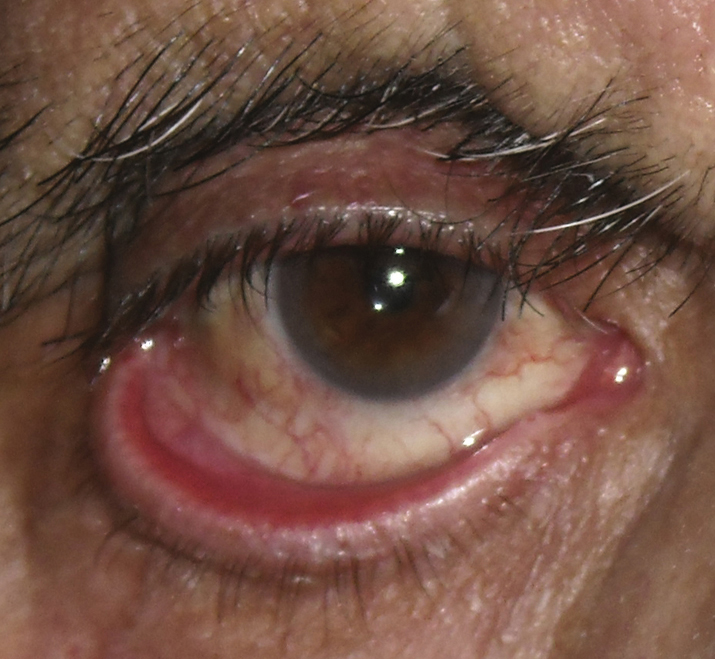(See Figure 6.3.1.)
Critical
Outward turning of the eyelid margin.
Other
Superficial punctate keratopathy (SPK) from corneal exposure; conjunctival injection and thickening and eventual keratinization from chronic dryness. Eyelid scarring may be seen in cicatricial cases. Facial hemiparesis and lagophthalmos may be seen in paralytic cases.
